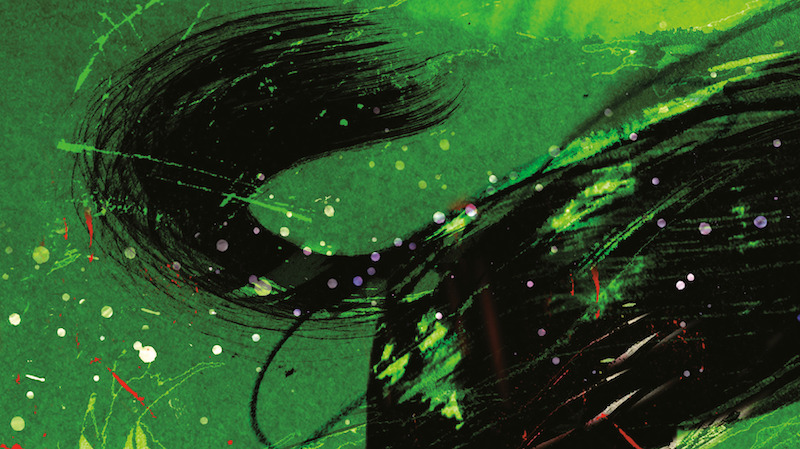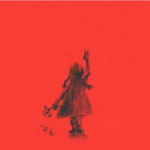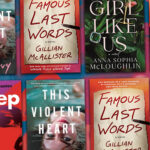From Potter to Tartt to Ferrante
How we came to love the multi-volume novel
“What was The Goldfinch of last year?”
A friend and editor of mine asked me this over email as he prepared an overview of the year’s publishing trends. I tried to think of if there was one.
I wrote first, “I think maybe there was a bit of a Goldfinch hangover from those who didn’t love it, and those who did, really didn’t want another one, they just didn’t want it to end.”
As soon as I typed that, I knew there was more to it.
I remembered getting one of those “If you liked The Goldfinch, you’ll love ________” emails, with a plug for a new Norman Mailer biography. You don’t even know, do you, oh all-seeing algorithm, I thought. Mailer had never once reminded me of Tartt, and I didn’t see him as Future Theo. And, as Molly Quinn of Housing Works Bookstore Cafe said, when I put the question to her, “It really isn’t fair to ask that without considering how widely anticipated it was.”
I thought about it more, and sorted through the books I’d heard people raving about.
Emily St. John Mandel’s Station Eleven rose to the top—she recently announced on Twitter it had gone into an 18th printing. But other than being a bestseller, it wasn’t like The Goldfinch. Besides her, Knausgaard and Ferrante led the pack in my mind. Also Jeff Vandermeer. Lev Grossman’s concluding volume to his Magicians trilogy. The new Marilynne Robinson Gilead novel, Lila—her third thus far in the Gilead novel series. The new St. Aubyn had reminded many that they missed the old one—of the five novel Patrick Melrose series. They wanted another Patrick Melrose novel.
And then I knew.
The Goldfinch of 2014 was not one novel, but many.
“Everyone is reading a series,” I wrote next. “And many are reading more than one.” I knew people who were caught up with Ferrante, the Knausgaard and the Vandermeer. If the novel was still dying, it seemed it was reacting by propagating with cycles and serials, as if it could survive better when defended by gangs.
This led me to my next question, which I had to ask myself after I sent that email. Where did all this serial novel madness come from? Was it yet another Harry Potter Generation effect?
I know. I know. But hear me out.
Our current series cravings have been building for some time, I think. Some of my friends had reacted to The Goldfinch as if it were a sequel to The Secret History and, in a way, it was at least a neighboring apartment—Francis Abernathy has an Easter Egg walk-on, introduced to Theo at a party about midway through the novel, and they both assure the one introducing them that they already know each other.
If not a sequel, The Goldfinch had windows into the same world. But there was a longing there, for more.
There are, certainly, other influences to consider besides Potter. Serials and novel cycles neatly mirror a new passion you can find online for podcasts—Serial being the most obvious one there—and for binge-watching television shows, begun with The Sopranos and The Wire, and now increasingly enabled by networks, most recently by the Netflix method, which makes a show’s new season available all at once.
But before there was binge-watching, there was binge-reading: the three-volume novel, for example, also called the triple-decker, was a tent-pole of Victorian popular culture in the 19th century. The triple-decker was popularized in part by the Victorian system of subscription libraries, which created the demand… but also ended it when the two leading subscription libraries, W. H. Smith’s and Mudie’s, decided to set terms as to just how much they would pay publishers for a volume.
The serial form and multi-volume novel wasn’t limited to the Victorians—Japan’s first novel, The Tale of Genji, came many centuries earlier, in six volumes—and certainly, novels were being written and published in serial formats in other parts of the world, so the form didn’t die out entirely with the Victorians. In the years since, many very serious literary serials, cycles, trilogies and quartets, have appeared and have stood the test of time for readers, though most of the form’s popular masters have written historical fiction, science fiction, erotica, or YA.
I have a provincial belief that I know is wrong, that serious novels do not have sequels. It comes from childhood. My first series was The Little House on the Prairie novels. I moved on to mysteries—the Hardy Boys and Nancy Drew—and then to fantasy, with the assistant pig keeper, Taran, in The Chronicles of Prydain. I next found the elves of The Sword of Shannara, along with so many young English children discovering magical lands that I wanted to be one: The Chronicles of Narnia, to be specific, and the Susan Cooper Dark Is Rising novels. Next were hobbits, sand worms, witches and psychic alien aristocrats—the Middle Earth, Dune, Witch World and Darkover novel cycles, respectively.
By the time I finished off Mary Renault’s series about the young Alexander the Great, I was also reading my first high school English class novels, novels that didn’t have sequels (though, Salinger, I feel like, counts). It was then this thought began to form, that stayed with me a long time: serious novels do not have sequels.
That at least was the illusion perpetrated on me by implication. By the time I entered my MFA program at Iowa in my late 20s, my friends and I joked pretty regularly of how “one should not make light of the three-volume novel,” as if it were ridiculous to think of writing such a thing. The idea of wanting a novel to never end and thus to require a sequel seemed like a childish demand on the author—the complaint of a boy who doesn’t want to go to bed. But none of us at Iowa, laughing at the three-volume novel joke at the time, could have guessed that Marilynne Robinson, our teacher, would go on to write at least three novels about a town called Gilead.
Harry Potter came along as we were being asked to believe publishing was dying. The internet was the new king, and we would all consume nothing of any serious length because no one had any attention span left. Click-click-click.
Potter was greeted by skeptics who thought it was just more English children discovering magic, a recasting of the old spell we knew so well. But this time that spell came in big Dune-sized novels, and each sequel was met with a fervor previously reserved for those 19th-century crowds on the dock famously waiting for the newest Dickens. The publisher of Potter even began a campaign to plant trees, given how many books were being printed. None of those Harry Potter fans, waiting at midnight for the latest book, believed for a minute they lacked the attention span to read the whole novel. If anything, they never wanted it to end.
Cut to James Wood’s review of The Goldfinch in the fall of 2013. The novel had a more or less review-proof lock on its sales success and so it was nothing for him to come out, very strongly, against it. He damned it as a kind of children’s literature, comparing it to E. Nesbit’s The Story of the Treasure Seekers—a late Victorian forerunner to all those novels about English children discovering magical lands. The review was passed around on social media by Wood fans as damning evidence that there was something wrong with both the craze for The Goldfinch and the qualities he describes here.
He at least allowed that he liked Tartt’s prose. But the paragraph that stood out to me was this:
Nesbit’s writing, with its lumps and ingenuous repetitions, sounds like a child talking to us, whereas Tartt’s smoother, more literary voice resembles adult pastiche. But both scenes imply a kind of proscenium arch: the pleasure of theatrical discovery merges with the pleasure of the narrative, and the reader sees with the eyes of the enchanted narrator.
And further down: “Her books can return you to several of the primal and innocent delights of childish reading.”
For all I or anyone else knows, this comparison helped, rather than hindered, the sales of the novel, because by then, YA crossover popularity was also backed by sales data—and was widely believed to have begun with, well, Harry Potter.
Nesbit’s Treasure Seekers, then, was the Ur-Potter. A book J.K. Rowling would never even have had to read for it to influence her—or the rest of us.
The paragraph stood out to me for that feeling, though, the feeling of being in the grip of something that will not let me go—it is what I am always after. I had it while reading The Goldfinch. And it came to me as I was reading another writer James Wood hailed that same year—Elena Ferrante, who, it could be said, creates a similar kind of proscenium arch, though hers is Neapolitan, and the pleasures are the pleasures of blunt emotional honesty, not baroque prose. Wood quotes her about her own work in that review: “Ferrante has said that she likes to write narratives ‘where the writing is clear, honest, and where the facts—the facts of ordinary life—are extraordinarily gripping when read.'”
This is certainly what she has done.
Is it so different?
Much has been written about the populist effect of Pottermania over the years—and that fight came and went, and was, like many fights fought on the Internet, inconclusive. The question still comes up, thought, like an old family fight: those who believe in the Potter Effect still believe in it; those who don’t are appalled and disdain the very idea.
I used to joke with my writing students that Harry Potter was their common text. I’m not wrong. There’s even data now. The Potter novels are more widely read than the Bible, worldwide, and have been seen to reduce prejudice and increase tolerance in those who read them. Millennials are readers, we know this now, a little skeptical of digital, and they prefer print. And they cut their YA reading teeth on an seven-volume series of novels about a boy magician in a fight for his soul, each one as thick as a phonebook.
And while I’m not suggesting any of the writers I first mentioned were influenced by Harry Potter (except, perhaps, Grossman), to the extent contemporary readers are willing to engage deeply with books above the 400-page mark in the age of the clickbaity Internet, and across several sequels (even in the absence of magic spells and flying battles) it doesn’t seem crazy to credit J. K. Rowling for laying the groundwork for the current surge—among both the children of that era, and the parents who read the Potter novels to them, and thought, hey, not bad.
And even if I’m wrong, to the extent that anything connects Rowling to Tartt, and to the current craze for Knausgaard, Ferrante and the rest, I think it is that feeling, something I’ve noticed friends mention while reading the Ferrante, amazed at the spell she casts: a desire to return to those “primal and innocent delights,” not just of childish reading, but of reading. All of these writers have in common readers who offer their loyalty the way any reader does after finding a novel they want to enter and never leave. We are all after that word-lust, the novel that makes us want to read it as quickly as possible, and when we find it, we experience the paradoxical desire to stay inside the world the writer has created—which is impossible if we read quickly, unless there’s a sequel.
That proscenium arch, described by Wood, is what we are all trying to stand under, whether we read Can Xue or Jodi Picoult. And whatever is going on, for now we are busy rewarding the ones that let us stay.
Featured image is a detail of three chapters from The Tale of Genji.





















